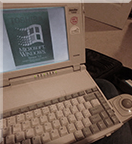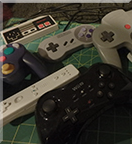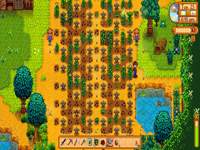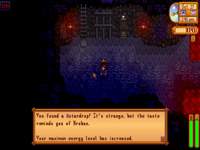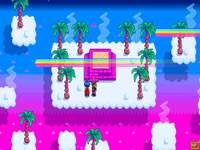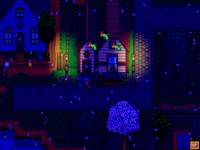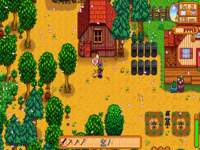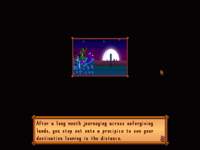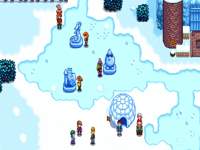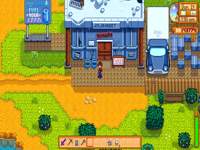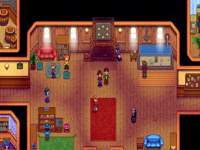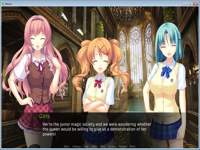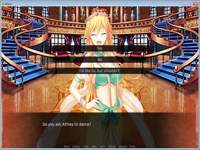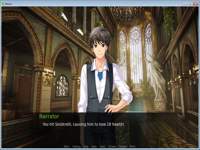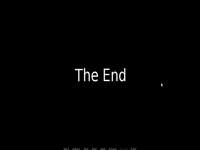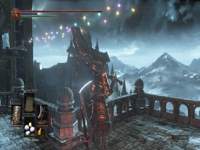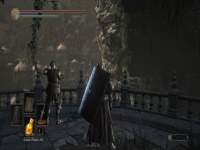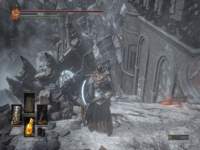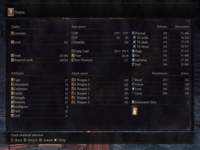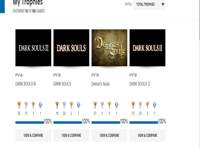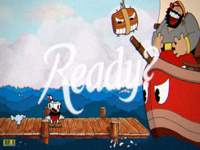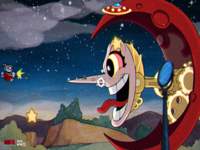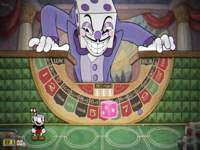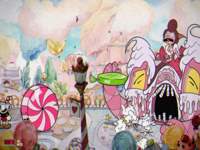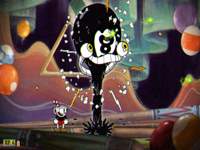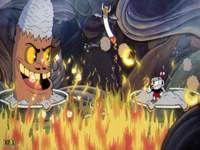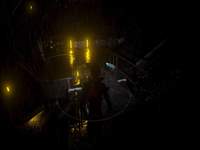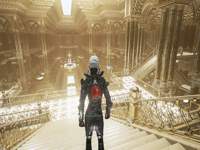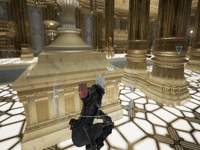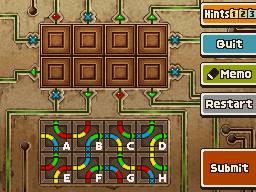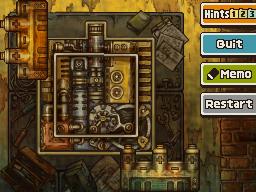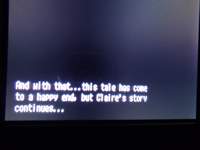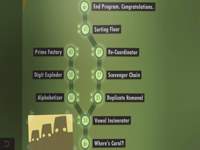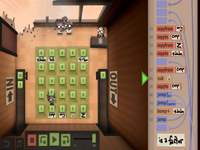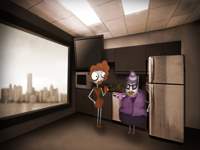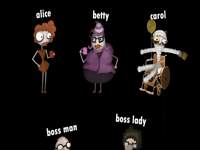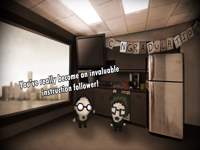Finished Valkyria Chronicles 4 (PS4).
Picked this up after playing it at a demo station at a convention.
For Valkyria Chronicles 1, it would actively bother me how misunderstood this game was. I would be talking to some gamer friend about what we're playing and say I am playing VC. I assert how good and unique it is, but they don't get it. They act as if I'm talking about Xenogears or Dragon Quest. As if it's the well-known formula with a few small changes. It is not. This is even for people who play JRPGs. Don't you dare recommend me any PS3 game if you have not played or at least heard a little of VC. It's weirdly absent from places. If there's a reviewer who talks about "the best games on the platform" and leaves it out, they haven't done the due diligence.
For Valkyria Chronicles 2 and 3 things took other directions. 1) They were mobile games, likely to cut costs. 2) They became less of a good dramatic historical fiction and more cheesy anime fan service. VC2 had practically no marketing in the west and due to VC2's low sales VC3 was not even released outside of Japan. Some people liked these games, I wouldn't go for them personally, I don't think these are fitting to WWII allegory.
For Valkyria Chronicles 4, they returned back to a proper console release on PS4 and a more serious story. Like the others it is a fictionalized version of the events of WWII. Take control of Basically-France fighting Basically-Germany in a Basically-Giant-Snowmobile. It keeps consistent gameplay with the others, mixing turn-based an action elements.
Overall:
- It is a pretty good strategy game.
- The game is very easy.
- All game except endgame, I always had more money than I had things to spend it on. The money counter might as well show a random number.
- Cutscene-to-gameplay ratio is very high.
Nonetheless would recommend because it kept me from playing Code Vein any more so it encourages healthier habits.
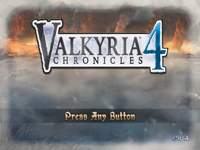
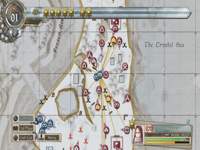
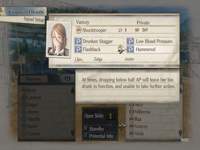
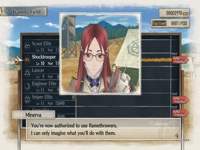
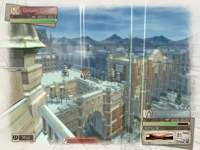


A cool (and hot!) boss fight in Code Vein. Guest appearances from Louis and random internet person.
Finished the Community Center in Stardew Valley (PC)
Stardew Valley is like a "what could have been" if SNES Harvest Moon were transported into our post-Minecraft present day. It's really approachable and fun.
HM (left), Stardew(right)

Comparison is specific to SNES HM because of the similarity of gameplay and visual arrangement of things.
For Stardew I have some small gripes which are visual
• Colors burn retinas
• most of graphics uses low-color palette but lighting effects from lamps and torches have access to way more colors?
• Pixels do not align to pixel grid for fishing line and many animations (see image)
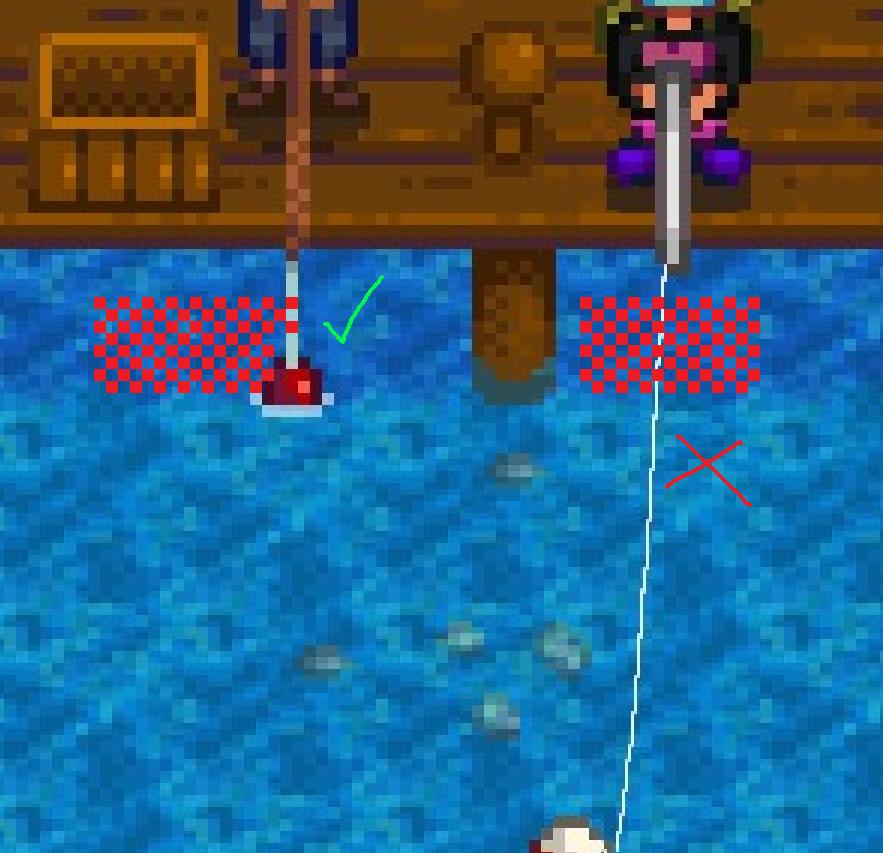
Stardew Valley is not the only offender in the category of "retro-style game that can't pick one video resolution". Shovel Knight and the Scott Pilgrim game also do this. Scott Pilgrim is probably the worst offender I have ever seen. Stardew Valley is not the worst but it's one where I have screenshots on hand.

Why is it bad? There are two parts to this, functional and aesthetic.
Functionally, it is capable of causing eye strain coming from the fact that it is visually confusing. Suppose we are looking at some 2D pixel art at a relatively coarse resolution. We use the same parts of our brains that could, say, appreciate mosaic tile artwork. The image lacks the full fidelity of the real world, but our eyes "fill in the missing information". Blocky edges become round in our mind's eye, detail is made out of nothing. When the resolution changes, it's like a tiled floor where big patches of tiles are different sizes. It's funhouse looking. It defies expectation. How can your brain interpolate things at a consistent rate, then? It's not altogether natural. Personally I experienced eye strain from this. While I am not a medical professional- just a person with a data set of size 1- I believe it could affect other people too since my eyesight is medically typical. I don't see anything necessarily causing my experience to be very unique. For people who aren't involved with graphics or low-res-looking games but play this one, they might experience eye strain yet not be to articulate why.
Aesthetically, it wrecks your scene composition. Here you've gone and standardized line width, balanced the colors of lines against the light source in your scene, taking into account the limited fidelity of the low resolution you've standardized on. But, wait a minute! You have this completely other part of the scene which is at a different video resolution. There's not an easy way to account for that in how you set up the scene. It will just look bad and I'm sad to say once you see it you can't un-see it.
The reason why the problem is possible is because these games are drawn at a much lower resolution than your native display resolution. When I run Stardew, for example, each 4x4 region of pixels tends to be (* minus the exceptions discussed here) of uniform color. On my 1920x1080 graphics setting, this implies the game is meant to run at 480x270. See if I were running the game somehow natively on a very old monitor, it wouldn't need to do anything 'special' in terms of scaling. Each of the TV's pixels is already the size of your face so whatever. But to fake a low resolution on higher resolution displays, upscaling is necessary. And that's perfectly ok. The problem is the way in which these games do the upscaling.
Most upsetting of all is that it's typically harder to get this wrong than to get it right. Yeah you read that correctly. Of course I don't have any game source code and I don't know how the developers have organized things, so I am making broad assumptions.
The supposed ease of implementation falls out of how geometry transforms and co-ordinate spaces work. If you keep a consistent low-resolution, you can set up things by:
- Allocate a low-resolution (e.g., 480x320) intermediate target and a full-resolution (e.g., 1920x1200) final target
- Draw your graphics to that intermediate. Move, flip, rotate sprites as necessary in that low-resolution space
- Draw the intermediate, scaled, to the final target
The complicated step for #2 isn't so bad since you only need to deal with one co-ordinate space. The scale at the end is really simple.
But instead, games decide to do this:
- Allocate one full-resolution (e.g., 1920x1200) final target
- Draw graphics directly (?) to that target.
- Each sprite's transformed position needs to take into account the scale-from-lowres-space-to-final-target
The problem is in step #2. Even if your calculations are 100% correct for getting everything positioned correctly in the final target, this setup will cause resolution-mixing artifacts (e.g., if you rotate anything by non-45-degree increments) since it is baked right into the design.
So, why have game developers gone out of their way to get this resolution-mixing behavior?
Maybe to save perf or memory. That said, I'm not pursuaded a small (~480x320) intermediate and a scale will make or break you for these games. Maybe they don't care or they don't think people will notice.
As much as I like Minecraft I think a lot of people have been corrupted by Minecraft aesthetic. You have the low-res-looking, limited-pallette-looking voxel art, where perspective transform is putting boxes of different sizes in your face all the time until it seems visually normal to you.
As for whether mixing low resolutions is bad or even a problem is getting out of the technical and into the subjective world of art. I assert that it's bad. I assert that it's bad in the same way that the author of McMansion Hell puts forth a case against certain architectural styles. I put forth a case against mixing of low video resolutions here. Now I think this post is way too long for describing something so simple and obvious but it's written without any particular target audience in mind so maybe you can make something of it.
But wait, there's more! Pallette inconsistency.
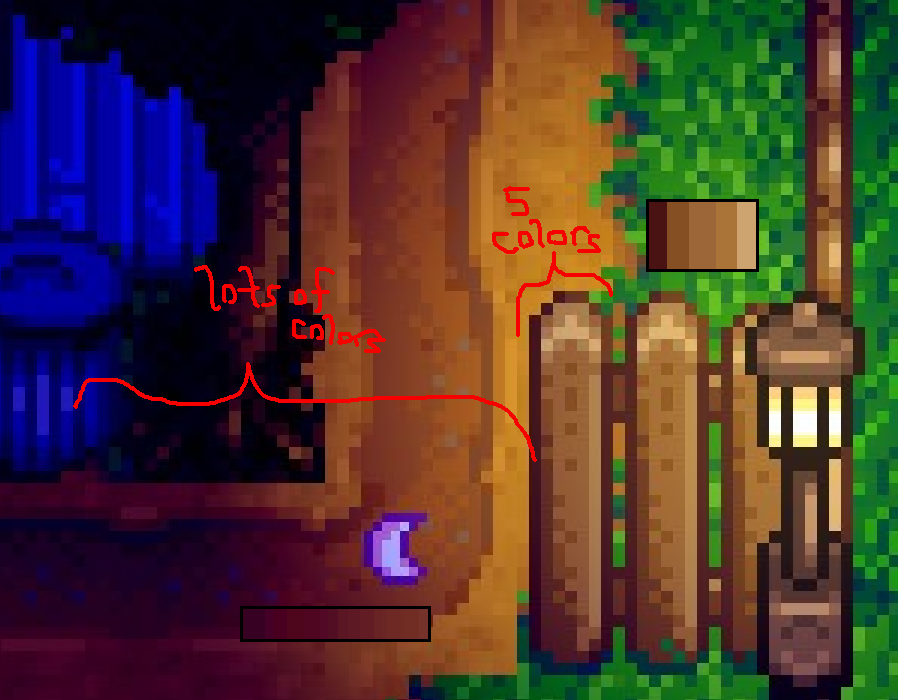
How many colors are in the pallette? Answer: yes.
The color inconsistency, I can also sympathize with-- it's hard, and arguably more work to take the result of your lighting calculation and quantize it down to the pallette used for the rest of the sprite artwork. But I mean, is it that hard? It's something you really can do programmatically, it's not like you need new art assets. You can use a lookup table in a shader, a volume texture if you want. There are different options for fixing this, but they just don't for some reason. Stardew Valley has no shortage of ambitious stuff- a procedural dungeon, a multiplayer mode, lots of characters with real-time behavior-- so it's not like they want for time or talent, but the take-away is this isn't where they chose to spend their time.
All of this being said, I want to make it clear that I liked the game.
So back on the game itself-- what Stardew does better than Harvest Moon:
• Automation of tasks. The sprinklers and auto-machines to feed and care for animals are a huge ease off of grind, unlockable in the game.
• Controls are less frustrating by design. It's impossible to accidentally expend seeds on an ineligible place, or drop things on the floor. How many times I've attempted in HM to give someone a gift only to Throw It On the Ground
• You can step "through" most crops, allowing for more flexibility in how to organize them
• The Minecraft-isms are fun and thoughtful.
• You can customize where new buildings are placed
• You can marry a person regardless of gender (e.g., same gender)- a step forward. While the original 1996 Harvest Moon doesn't have this, the modern Harvest Moons (Story of Seasons) don't have it either
• More interesting characters. For example I liked Linus's storyline, where he lives as a homeless person but your role is not to "fix" or "save" him. Rather, your role is to be his friend
• The relationship system is less broken. The rate of heart levels increase is slowed as the number of allowed gifts is fixed
• There is an interesting variety of characters. They all have unique events for friendship, not just marriage candidates
The game doesn't have a conventional "ending" like HM where there is a long scene and then credits.
There is an "evaluation" of sorts on the 3rd year as well as two big milestones. An easier, sad-outcome one (completion of Joja Community Development project) or the difficult, happy-outcome one (renovation of the Community Center). I ended up making two farms where one got each outcome. Although I did these, there is still a lot of replayability potential.
Overall verdict: it's good! Krobus/10
Time to set up your Nintendo Switch!
>perform hookup to TV.
>"Please log in with your Nintendo Account"
>okay
>"No account found"
> It turns out what I have is a Nintendo Network ID, not a Nintendo Account.
>They are different things.
>Use "External Sign-in" option to sign in with the Nintendo Network ID, presumably so that it can be linked to a Nintendo Account.
>"You can't log in with your Nintendo Network ID on this device.
By default, that type of ID is intended to be used on the Wii U console and Nintendo 3DS family.
To enable it to be used on other devices, go to your settings and select this option"
>okay
> Wii U is not hooked up, also I don't think I had used that sign-in with the Wii U
But I did for the 3DS
> Find the 3DS
> Battery dead
> Find AC adapter
Plug in
> Open "Settings" -> "Nintendo Network ID"
> "You must perform a System Update in order to access the settings"
> Go to the option for System Update
> System update can't be performed until the battery has more charge
Even if it's plugged into AC power
Currently waiting for it to charge.
Really digging this Nintendo exclusive. It's not the easiest game I've picked up over the last couple years, but the puzzles rival Layton and the graphics include so many different styles of progress bars all of them delightful! The music, I'd describe as very 'chill'.
Finished Minion (PC)
This is an indie game developed by a friend of mine. This game follows the visual novel genre, where gameplay consists of dialogue choices that branch out into many story possibilities.
For all games of this genre, sometimes the story outcomes and narrative flow are predictable based on your decisions; sometimes they aren't. Seeing how it unfolds is a lot of what makes it fun, though.
In this game you play the role of a minion, the title character- the lowly servant to the sorcerer-queen Althea who rules over a medieval fantasy-type kingdom. Althea is powerful but so is her ego and her potential for cruelty. She doesn't, as a default, consider the needs of her subjects. As her minion, you have the opportunity to step in and help the subjects of her kingdom! Or not. There are a lot of different choices.
The game doesn't transparently show its statistics to you and it keeps things interesting. You draw conclusions about what actions cause what chages if any. For example, the 'Exercise' action appears to improve your combat ability. Also, 'Reading' will improve how sensitive or artistically inclined your character is. You don't readily see the effects of your stats, but they will affect certain events such as the annual harvest festival competitions.
Playthrough #1: A neutral-good, middle-of-the-road strategy for all my decisions. BAD IDEA. I ended up battling the dragon and getting annihilated. Since I hadn't developed my combat skill enough, I couldn't fight the dragon. Since I hadn't done anything selfish, I didn't have combat items. Since I hadn't unlocked the relevant events, I couldn't enlist another's help to fight the dragon for me. This game does NOT favor the 'balanced build'.
Playthrough #2: Be completely useless. Do nothing all the time, read books if I have no other option. Don't help Althea. Don't help the townspeople. Don't go to festivals or do much of anything. Althea ended up killing me for my insolence. I don't know what I expected!
Playthrough #3: Kiss up to Althea. She is a sorceress-queen, so this should be a valuable relationship, right? I got her gifts, went to events with her, and chose dialogue options that made her happy. I *think* this unlocked some options where she can fight battles instead of me. This mostly worked out well, except for the battle at the end against the wizard. Whatever I did, I wasn't able to ensure she or I or the kingdom's army were powerful enough. I have a feeling there is a special ending involving Althea but I wasn't able to get past this part.
Playthrough #4: Lawful-good warrior. Choose decisions that benefit the townsfolk, AND exercise all the time, AND get magic items (sword, armor, shield) even if it means hiding them from Althea and getting her mad at me. This ended up working out well. I was able to kill the dragon, AND the Wichaea guards, AND the wizard himself, and get a good ending!
Overall, I loved playing this game particularly because of the writing. The culmination of how your decisions affect later outcomes was interesting to discover and the writing was the vehicle for that. Dialogue was at times serious, and silly, and breaking the 4th wall and involving pop culture references. There is considerable depth you may or may not even get to see, depending on what story branch you take.
Still need to find out what happens if you don't throw the One Ring into the volcano. Or how to improve my dancing ability. So many unanswered questions!
Finished Dark Souls III: The Ringed City DLC (PS4)
With a heavy heart, playing the supposed the last game in the series. From's Hidetaka Miyazaki confirmed that the franchise was done.
Now I have played Demon's Souls, Dark Souls 1+2+3. All DLCs. Play time on average 200 hours per game, on average 3 playthroughs per game. I intend to play some multiplayer on Ringed City while there is still life on online. Other than that, that's it.
It has been a large part of my life since playing the Chinese pre-order of Demon's Souls back in the summer 2009, on a CRT, when I was living in Santa Clara CA. Demon's Souls was not well marketed. Found out about it through random word of mouth. At first I thought it would be a very typical character-driven fantasy ARPG. But, everything about this game was surprising. It was created in the golden age of quest markers and in-game explanations, of which there were none. It is a fantasy RPGs and those tend to be character based, but the focus was totally on gameplay and environment. It is Japanese, but plays like a WRPG.
I understand the game a bit better if it's contextualized against King's Field for the PSX, understood as a spiritual predecessor to the franchise. I didn't play King's Field until just a few years ago, but when it came out it would have been received much the same as Dark Souls today. It's an RPG that is so finicky and brooding with barely any background music.
Ringed City was a good time. At the same time I think they have chosen a good place to end it.
Finished Cuphead (PC, Windows)
What was good
• It looks like one of those old timey cartoons!!!!
• Art direction
• This game is a literal work of art.
• Gameplay-wise, each level feels very fresh and different, where you have some standard shoot-y 2D bosses, some gravity-changing platforming, Gradius-style shooting, vertical scrolling boss fight. It has everything
What was not good
• There was this one part where ha ha just kidding it's perfect
This game avoids having too many moves or power-ups which are "just good"; each weapon has its advantages and drawbacks, and your starting weapon-- the peashooter-- could very well be a good late-game choice. For example the second-to-last boss fight (King Dice) I used that one. This specials are not your musou in Dynasty Warriors. They are not "just good", (with one exception) you are not invincible when you use them, they can and will get you killed versus if you didn't use the special. From a gameplay perspective this makes you put a lot more thought into your actions.
This game was as challenging as everyone says it was. There were moments I thought I may not be able to make progress in it, however each boss's moved are telegraphed one way or another so once you pick up on that it gets doable. I tend to be better that the reflex-based parts (like the bird feathers or robot missiles) while I had trouble with the weird parrying mechanic.
"Easiest" boss- the pirate. Everything in that fight is pretty killable or avoidable...
Hardest" boss- The bee. I don't know exactly why I really had trouble with it. feels like Donkey Kong?
Favorite boss- the stageplay/actress one. There is this part where she is replaced by a cardboard cutout. It reminds me of the final fight with Kefka from FF6. It's great.
Finished Echo (PC, Windows)
This is a Danish indie game I first played at a demo booth at PAX last year. It made me really happy to find out that the full version was released.
This is a stealth-action game where you are pitted against copies of yourself, and there is a day-night cycle. During the day, the types of actions you perform are recorded. Come the next day, those copies will re-play an approximation of what you did. Therefore, you want to be very conscious of what you do during the day, and use the night-time wisely.
Examples of recorded behaviors: running, sneaking, yelling, eating grapes, playing musical instruments, bludgeoning, shooting a firearm.
There is something terrifying yet rewarding in going full Rambo in a stealth game
Story: The main character has been awoken after a deep sleep. Long ago, her friend Foster was about to be killed, so she put a digitized copy of him into a small red box. To be resurrected later, once the technology exists. She travels to a weird planet that appears to hold the secret to resurrecting him out of the box.
The visual style of this game is kind of ridiculous. Everything looks like a geometry instancing demo with all kinds of shiny things. But it works for this game. If nothing else it looks really unique and distinctive. It is not Mass Effect or Destiny or Dead Space. Would play an Echo 2.
Finished Professor Layton and the Last Specter (3DS),
and the bonus game that the USA version ships with, Professor Layton- Little London
This is the fourth installment in the Professor Layton series. The puzzles seem, on average, easier (maybe too easy?) compared to previous installments. But there is enough variety to keep it interesting, and the side puzzles like the model train set are fun and worthwhile.
Little London looks and plays a lot like Harvest Moon, if you isolate it down to all of the cutesy character interaction and none of the turnip farming.
I have a big problem with Little London.
The mechanics of the game are as follows: you have two stats, Wealth and Happiness, whereby Wealth is accrued from working at jobs and fulfilling requests from the various townspeople; Happiness is acquired also by fulfilling requests, however-- when you buy anything that costs X, X/2 will be added to your Happiness. Therefore, after unlocking the highest Wealth-giving quests in the game (and also the train ticket job), it's just a matter of buying expensive things over and over and until you reach the Happiness desired. Optionally, you can sell things (for less than was paid for) and buy them again to streamline this grind late-game.
Is this the kind of value system we want to be broadly promoting to people? Materialism??
Your character begins the game with a home and basic needs met. The Wealth is just for buying frivolous things. New furnishings, new clothes. Cosmetic accessories. These are great, sure, but to directly, numerically link the resulting happiness they provide with how much they cost feels totally unrealistic. Am I going to be ten times happier with a $200 curtains compared to $20? Should I really spend $5000 on a golden stuffed animal? There are some material things I've purchased which made me *less* happy, for example the Lion King for Super Nintendo.

Got all size+speed optimization challenges in Human Resource Machine!
Some of them are HARD.
I have new appreciation for being able to std::swap (in one expression), or use, like, any literals
And the ending. The reward is a creepy cutscene...

